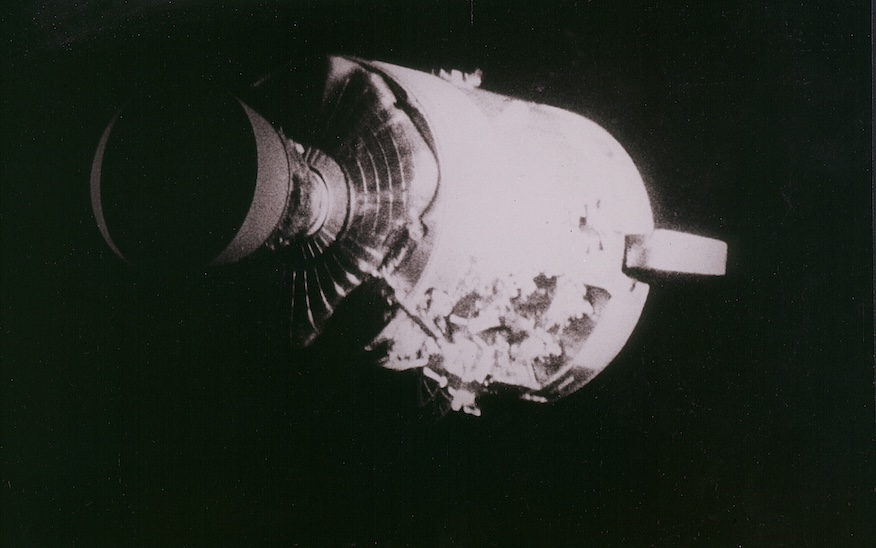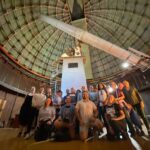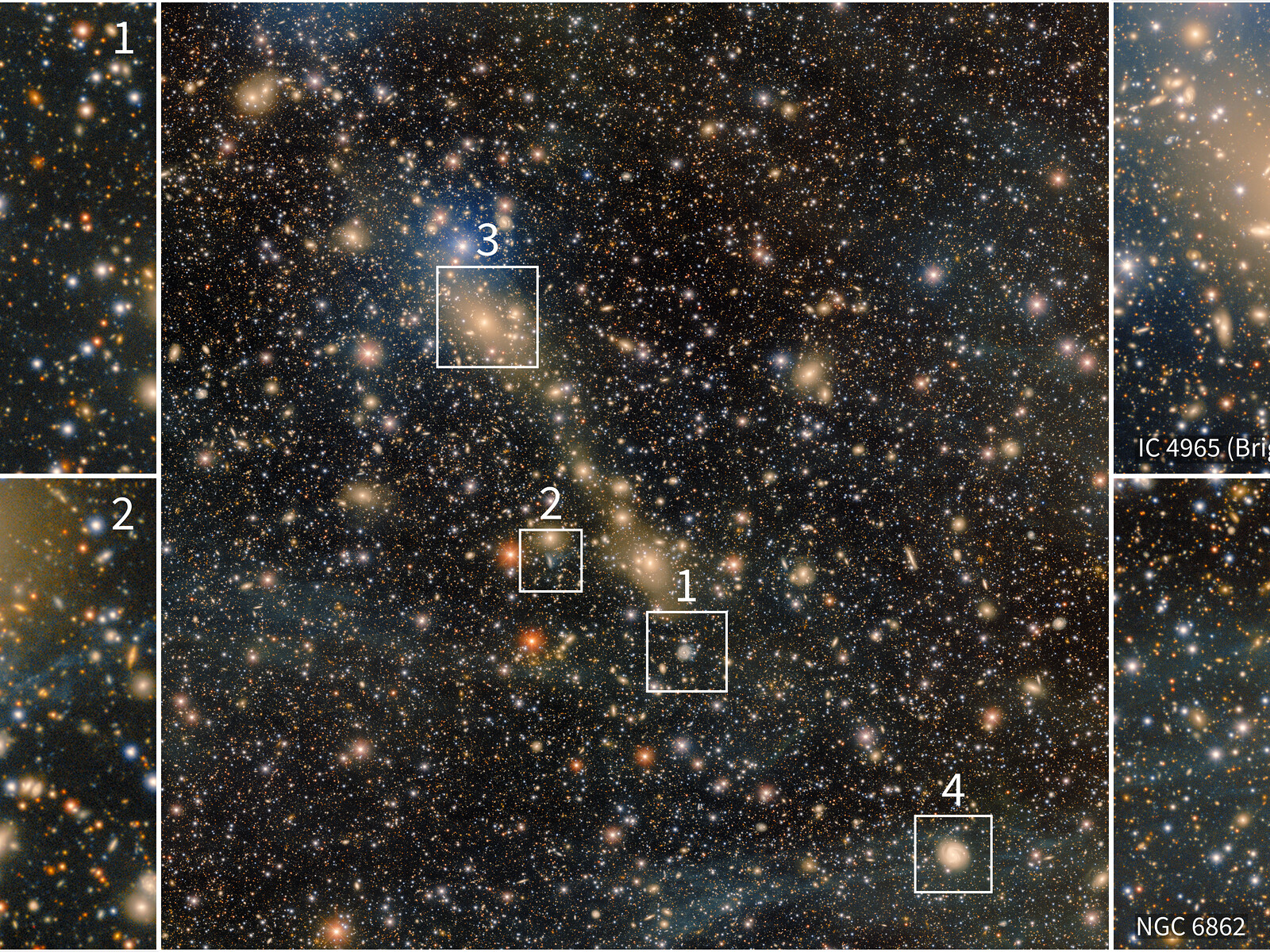Now Reading: Jim Lovell, Apollo 8 & 13 astronaut, dies at 97
-
01
Jim Lovell, Apollo 8 & 13 astronaut, dies at 97
Jim Lovell, Apollo 8 & 13 astronaut, dies at 97


James ‘Jim’ Lovell, one of the last seven surviving Apollo astronauts died on Thursday, Aug. 7, at the age of 97. A veteran of four spaceflights at the dawn of America’s human spaceflight program, he flew two missions in the Gemini program and then served on the crews of Apollo 8 and the ill-fated Apollo 13.
“We are enormously proud of his amazing life and career accomplishments, highlighted by his legendary leadership in pioneering human space flight. But, to all of us, he was Dad, Granddad, and the Leader of our family,” Lovell’s family said in a statement, shared by NASA. “Most importantly, he was our Hero. We will miss his unshakeable optimism, his sense of humor, and the way he made each of us feel we could do the impossible. He was truly one of a kind.”
Like many of NASA’s earliest astronauts, Lovell came to the space agency by way of the armed forces. A graduate of both the University of Wisconsin and the U.S. Naval Academy, Lovell spent four years as a test pilot at the Naval Air Test Center in Maryland and served as the manager for the F4H “Phantom” Fighter program.
Lovell accumulated more than 7,000 flying hours in his career. His military career spanned from 1952 through 1973, a few years after Apollo 13.

Module mockup at the North American plant in Downey, California. Image: NASA
When he arrived at NASA, he was part of a group of men known as the “Next Nine,” who joined the Mercury Seven. Lovell’s class included the likes of Neil Armstrong, Frank Borman and Tom Stafford. Lovell was the last living member of the group.
After serving as a backup pilot for the Gemini 4 mission, Lovell first launched to space on Dec. 4, 1965, alongside fellow New Nine classmate, Frank Borman, on the Gemini 7 mission. The nearly 14-day-long mission featured the first rendezvous of two crewed, maneuverable spacecraft.
Lovell returned to orbit nearly a year later when he and Edwin “Buzz Aldrin Jr. lifted off from Launch Complex 19 on a Titan 2 rocket. That mission lasted just under four days before they splashed down northeast of the Turks and Caicos Islands.

He went onto serve as the Command Module Pilot for the six-day Apollo 8 mission, marking the first crewed trip out to the Moon that paved the way for the Apollo 11 lunar landing. The three-person crew of Lovell, Borman and William Anders entered into lunar orbit on Dec. 24, 1968.
“The vast loneliness is awe-inspiring and it makes you realize just what you have back there on Earth,” Lovell said during a live broadcast that Christmas Eve.
He would go on to describe planet Earth and described it as a “grand oasis to the big vastness of space.”
Given its near catastrophic turn, Lovell may best be known by the commander of the Apollo 13 flight from April 11-17, 1970. The planned 10-day mission, which would’ve included a Moon landing, was famously derailed by an explosion in the Apollo Service Module’s cryogenic oxygen system en route to the Moon.
The quick work of Lovell and his crew members, John Swigert and Fred Haise, in concert with the members of ground control in Houston, turned their lunar module ‘Aquarius’ into a lifeboat.

The harrowing adventure was depicted in the 1974 film, Houston, We’ve Got a Problem and again the 1995 Academy Award-winning film Apollo 13, which starred Tom Hanks as Lovell and was directed by Ron Howard. The latter film was the adaptation of Lovell’s book, Lost Moon: The Perilous Voyage of Apollo 13, which was published in 1994.
“NASA sends its condolences to the family of Capt. Jim Lovell, whose life and work inspired millions of people across the decades,” said acting NASA Administrator Sean Duffy in a statement on Friday. “Jim’s character and steadfast courage helped our nation reach the Moon and turned a potential tragedy into a success from which we learned an enormous amount. We mourn his passing even as we celebrate his achievements.”
With his passing, David Scott, commander of Apollo 15, became the last living commander of an Apollo mission. Scott is now one of just six remaining Apollo astronauts:
- David Scott (Apollo 9 and 15)
- Russell Schweickart (Apollo 9)
- Buzz Aldrin (Apollo 11)
- Fred Haise (Apollo 13)
- Charles Duke (Apollo 16)
- Harrison Schmitt (Apollo 17)
Funeral arrangements for Lovell have not been announced and Lovell’s family asked for privacy as they mourn his loss.
Stay Informed With the Latest & Most Important News
Previous Post
Next Post
-
 012024 in Review: Highlights from NASA in Silicon Valley
012024 in Review: Highlights from NASA in Silicon Valley -
 02Panasonic Leica Summilux DG 15mm f/1.7 ASPH review
02Panasonic Leica Summilux DG 15mm f/1.7 ASPH review -
 03How New NASA, India Earth Satellite NISAR Will See Earth
03How New NASA, India Earth Satellite NISAR Will See Earth -
 04And Thus Begins A New Year For Life On Earth
04And Thus Begins A New Year For Life On Earth -
 05Astronomy Activation Ambassadors: A New Era
05Astronomy Activation Ambassadors: A New Era -
06SpaceX launch surge helps set new global launch record in 2024
-
 07From Polymerization-Enabled Folding and Assembly to Chemical Evolution: Key Processes for Emergence of Functional Polymers in the Origin of Life
07From Polymerization-Enabled Folding and Assembly to Chemical Evolution: Key Processes for Emergence of Functional Polymers in the Origin of Life




















